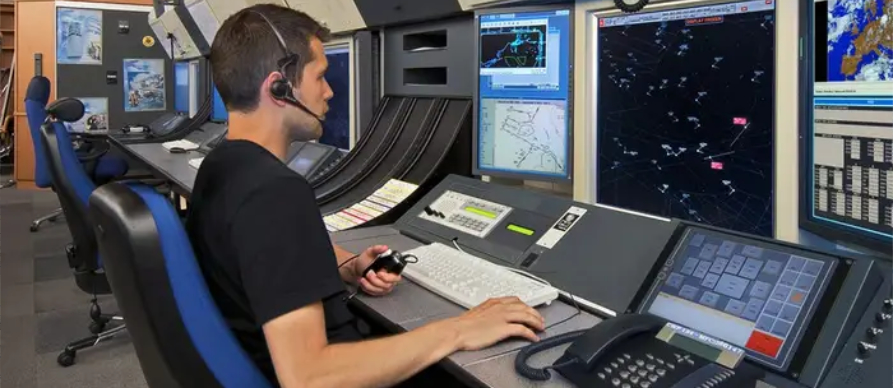
“Flight following” means ATC services are providing aircraft with traffic conflict advisories by establishing and remaining in contact with ATC services, while you fly. When ATC provides flight following service they will monitor your position and give you reports of other traffic in your area (time and workload permitting). Once ATC accept, your request they will give you a discreet “squawk code” for your transponder, and monitor your flight on their radar.
There are several ways to start flight following.
Requesting Service: When a pilot plans to conduct a VFR flight, they can request flight following from ATC. This can usually be done before departure or while in-flight. The pilot provides information about their aircraft, departure location, intended route, and destination.
Monitoring: Once the pilot’s request is accepted by ATC, the controller responsible for that airspace will begin monitoring the flight. They will provide traffic advisories, weather updates, and other pertinent information to the pilot as needed.
Traffic Advisories: One of the primary benefits of flight following is receiving traffic advisories. ATC will inform the pilot about the presence of other aircraft in the vicinity, especially if there’s a risk of collision.
Emergency Assistance: If the pilot encounters an emergency or navigation issue, ATC can provide guidance and assistance, including vectoring the aircraft to a safe location or providing information on nearby airports.
Weather Updates: ATC can provide real-time weather information and updates, helping the pilot make informed decisions about route changes or diversions to avoid adverse weather conditions.
Communication: Pilots are required to maintain communication with ATC while under flight following. They report their altitude, position, and other relevant information as requested by the controller.
Termination: The pilot can request to terminate flight following at any time, typically when they are approaching their destination or when they feel comfortable navigating independently.
Flight Following initiated on the ground
At a towered airport, (such as Hanscom) you can ask for help from clearance or ground control:
- Pilot: “Hanscom Clearance (or Ground), [Warrior 278ND], ready to taxi with [Code], request flight following to [Marthas Vineyard], MA at [4,500]”
- Clearance (or Ground): “[Warrior 278ND], This is not a class Bravo clearance, Approach Frequency 124.4, Squawk [1234]”
- Pilot: “Not a class bravo clearance, Departure Frequency [124.4], squawk [1234]”
Be sure to understand and read back correctly, and carefully (an instruction was given)
If requesting from a ground controller, remember they do not have to help you with this, so be appreciative when they do!
After you have taken off you will be directed by ATC to contact [Boston Approach] on 124.4.
Tune to the given frequency [124.4] and inform them you are on the frequency.
- Pilot: “Boston Approach [Warrior 278ND] with you at [Altitude e.g 2,000] climbing to [3,500], VFR to [Martha’s Vineyard]
- Approach: [Warrior 278ND] radar contact, Boston altimeter [29.95]
Flight Following initiated in the air:
You can also establish flight following once you’re in the air by contacting departure/approach for the area you are in (which can be determined from the sectional or A/FD).
To do this, tune the correct frequency, say only your call sign and wait for a response:
- Pilot: “Boston Approach [Warrior 278ND].”
The approach controllers may be talking on several frequencies at once. They’ll reply when able.
- Approach: “[Warrior 278ND], Boston Approach, go ahead.”
- Pilot: “[Warrior 278ND] is at the Needham Towers, requests flight following to Hyannis at 5,500 feet.”
- Approach: “[Cherokee 278ND] squawk 2345 (and often Ident).”
Change the transponder to 2345, Ident only if requested.
- Pilot: “Squawk 2345, [278ND]”
- Approach: “[Cherokee 278ND], radar contact, 1 mile northeast of Norwood airport, Norwood altimeter 29.92.
- You are cleared through the Boston Class Bravo airspace, climb to your requested altitude
Remember flight following alone does not implicitly allow you to enter Class B airspace. While VFR, you always need clearance to enter Class B airspace.
- While enroute, the controller may then tell you when other traffic is in your area.
- The controller expects only one of two responses (avoid extraneous info in the response):
- You have the traffic -or- w Negative contact
- Enroute, he/she may hand you off to another controller on a different frequency.
- Approach: “Cherokee 278ND, contact Cape Approach on 118.2”
- Pilot: “Cape Approach on 118.2., [Cherokee 278ND]”
- Pilot changes frequency to 118.2
- Pilot: “Cape Approach, Warrior 278ND, with you at [Altitude]
If a single controller is working multiple sectors (often the case with Centers during low volume periods), he/she will state “change to frequency 1xx.x”
- After you acknowledge and changed frequencies, your radio call would include only the approach/center name and your full tail number. He/she already confirmed your altitude.